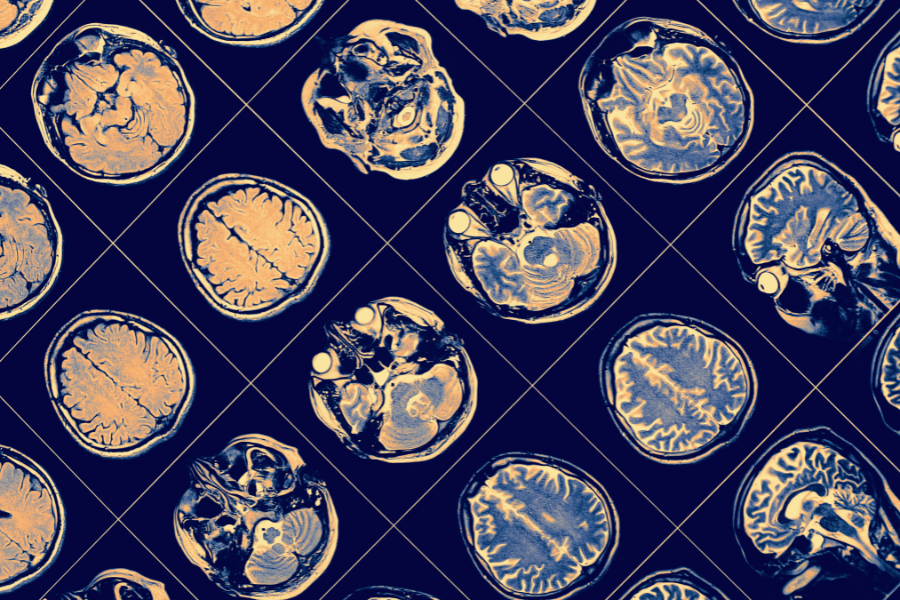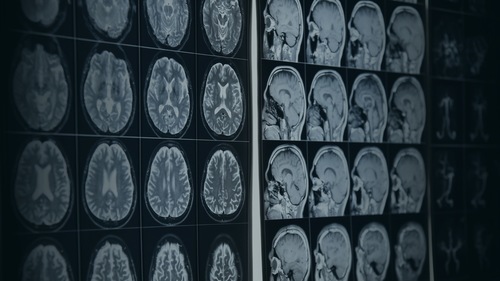The “fear network” is a series of connections in your brain specifically focused on helping you regain safety and security.
One pathway in this network is fast, which allows for quick, instinctive reactions to threats. The other pathway is slower, which involves more deliberate analysis.
Understanding these two pathways helps bring insight and compassion to why we do what we do when we’re anxious and afraid. Without it, we’re more likely to come to inaccurate conclusions and unhelpful judgements about these reactions in ourselves and other people. The following sections outline four important parts of this fear network to help see anxiety and fear as involving real physical processes in need of attention.
key takeaways
- Fear and anxiety are the products of complex neurological processes.
- These processes are shaped by biological and social factors.
- Dysregulation in these neural circuits is common in anxiety disorders.

AMYGDALA & HPA AXIS
The Fast Pathway
The fast pathway is most concerned about mobilizing your body for action and isn’t so concerned about accuracy or quality control.
This happens automatically and outside of your conscious awareness, which is why you can feel anxious at certain times or in certain places without really understanding why based on the information it has taken in.
Many different parts of the brain are involved in this pathway, making it more of a complex web than a single straight path from A to B. There’s no dedicated seat for fear and anxiety, but we’ll outline two of the primary components of the fast pathway: the Amygdala and the HPA-Axis.

A SCANNER FOR EMOTION
The Amygdala
It’s helpful to think of the amygdala like a scanner.
It does a rapid scan of each of your senses and memories for emotional material. If it picks up on the potential for something bad happening (e.g. seeing a tiger, hearing a gunshot, feeling an earthquake, tasting something astringent, or smelling something noxious), it will activate the stress alarm in your body.
What else does it look for?
The amygdala scans situations to determine if they are dangerous to:
Your body
Your relationships
Your emotions
Your community
Your boundaries
Your values and beliefs
People you care about
The world
There are also certain universal threats to human safety that are hard-wired into it that it looks for during it’s scans. This is why we share so many common fears, such as venomous animals, risks of falling or suffocating, and risks of being judged or outcast from a group. You may or may not have anxiety or fear when faced with these experiences, it’s just a predisposition encoded into the amygdala scanner.
Your life experiences are what will ultimately influence what your body does with this and inform the scanner of new things to look out for in the future. If something happens to you directly, the amygdala is going to hold onto that experience much more closely than if it happened to someone else. The more removed it is from your direct experience through each of your senses, meaning the more hypothetical it gets, the less it’s going to hold onto scanning for that information.
The amygdala also appears to be more sensitive in anxiety disorders, no longer giving a proportional response to what it scans and activating the stress alarm too often, too long, or too intensely.

THE STRESS ALARM
The HPA Axis
The HPA Axis is the stress alarm that gets activated by the amygdala.
“HPA” is an abbreviation for the loop between the hypothalamus and pituitary gland in your brain (pictured here together) and the adrenal glands above your kidneys. It’s what signals the release of stress chemicals in order to mobilize your body for some sort of action.
Depending on the emotional significance of the information it receives from the amygdala, the HPA Axis can sound either a big alarm or a little alarm.
If there’s just a little bit of negative emotion, it will only sound a small alarm. You’ll feel mild discomfort from the stress chemicals, but that’s about it. If there’s a lot of negative emotion, it will initiate a full on chemical dump of cortisol, norepinephrine, and adrenaline. This is what happens when you feel completely flooded, panicked, and are reacting intensely to something.
Regardless of the size of the alarm, this is all a very quick and automatic without any conscious thought.
Why does it feel like it won’t stop?
People who struggle with anxiety may have a problem with the HPA Axis’s built-in “off switch,” which prevents the alarm from stopping after a threat has passed. This means it won’t recognize that it doesn’t need to produce so many stress hormones anymore, which can keep you constantly on-edge, especially if the amygdala is also more sensitive.
HIPPOCAMPUS & PREFRONTAL CORTEX
The Slow Pathway
The connections between the amygdala and HPA Axis are large and strong so that they can carry lots of information really quickly, but at the expense of quality control. It’s the epitome of “react, then think.”
As a complement, we also have a slower and more accurate route for processing additional information about the threat. This helps us generate a more comprehensive image of the situation to aid in deliberate problem-solving if needed.
This slow pathway is also made up of a complex web of structures, but the two primary components we’ll outline are the Hippocampus and the Prefrontal Cortex.

A LIBRARIAN FOR MEMORIES
Hippocampus
The hippocampus is involved in encoding and retrieving memories, which allows us to compare what’s happening in the present to things we’ve experienced in the past.
Think of it like an intake librarian that classifies and shelves different types of memories throughout different parts of your brain. One section of your brain holds sensory information; one section holds generic facts like dates and directions; another holds procedural manuals on how to do certain things like drive, swim, and ride a bike; and yet another is a video section of personal experiences based on some of these other books.
Your life experiences continually add new books to this library. Then, when something in the present feels reminiscent of something from the past, it prompts the librarian to pull certain books off the shelves to bring to the front desk where it will be presented as a whole memory.
Just one of your senses is enough to bring out a whole stack of books with other things connected to it in a particular memory, which is why a particular scent, song, or location can transport you vividly back in time.
Why do my memories sometimes seem incomplete?
A frustrating part of anxiety and fear is when the librarian only retrieves one or two books that don’t have enough information for a complete memory. You have the volumes that contain emotions and physical sensations, but are missing the volumes that contain verbal descriptions or images of the original event.
This is what we call unconscious memories because they don’t have enough information about the past event to be consciously recalled or put into words. Something prompted it’s retrieval, but you won’t be consciously aware of where it came from and it will seem like you’re just feeling uncomfortable for no reason.
But unconscious memories like this can develop for a variety of reasons; such as:
Events that happened early in childhood before verbal language developed in order to comprehend it
Traumatic events that caused the language processing part of the brain to shut down, such as when we dissociate and mentally check out
After having done something with enough repetition that it can be done automatically without needing to go through a verbal list of steps
This is also how we experience “gut feelings” or intuition about things we can’t quite explain. The brain has identified something that doesn’t fit it’s model for how that situation should be based on past experiences, but it’s unable to put language to it which can cause us to question the validity of the reaction.
How is this important for quality control?
No matter how much information is actually retrieved and brought forward by the librarian, these books are sent back to the amygdala for scanning. If the amygdala detects negative emotions and threats in the past situations, it will use it to reinforce the stress alarm to the present situation that appears to have similar elements. It thinks you need to respond the same way now as you did back then. If it doesn’t detect these negative experiences, it will use it to signal a stop of the stress alarm.
Because of this, the hippocampus is a primary target for psychotherapies that work to safely retrieve memories, add new information about how today is different from the past, add new information about your growing abilities to cope, and add new information about your growing successes each time you face the triggering present situation. This new, updated information gets scanned by the amygdala, which provides new context to help reduce the stress alarm. You may not eliminate it, but you can start to make it more manageable and less disruptive in your life so that you can start feeling more at ease.

THE DECISION MAKER
The Prefrontal Cortex
Finally, the prefrontal cortex is what we can think of as the “decision maker.”
It references the memories brought forward by the hippocampus and weighs them against the present facts of a situation so that you no longer have to rely on unconscious, automatic reactions.
It then identifies possibilities for action, evaluates their pros and cons, and contemplates their effects on the future. This is done in the service of finding the right decision that will turn off the stress alarm.
If I rationally understand a situation and what to do, why am I still anxious?
The problem is that this part of the brain is easily overwhelmed by complex, uncertain, and chaotic situations. This can make it difficult to solve problems.
The signal back to the amygdala also appears under-active in anxiety disorders, meaning the stress alarm will keep the prefrontal cortex hypervigilant and struggling to find the “right” decision that will turn off the alarm.
Life has also rapidly become more complex over just the past 30 years. Brain studies have indicated that adolescence is now taking several years longer than it used to in order to finish developing an adult brain that can handle this increasing complexity.
This means a longer period of vulnerability to anxiety disorders as the brain struggles to keep up with the uncertainty, unpredictability, and rapid changes of modern life.
Conclusion
Anxiety can never be eliminated, nor should it be, but we still have a responsibility to understand what contributes to it so that changes can be made for greater mental health in a complex world. Understanding the pathways involved in this network of fear and anxiety is just one part of responding to challenging circumstances in ways that are both compassionate and supportive.




